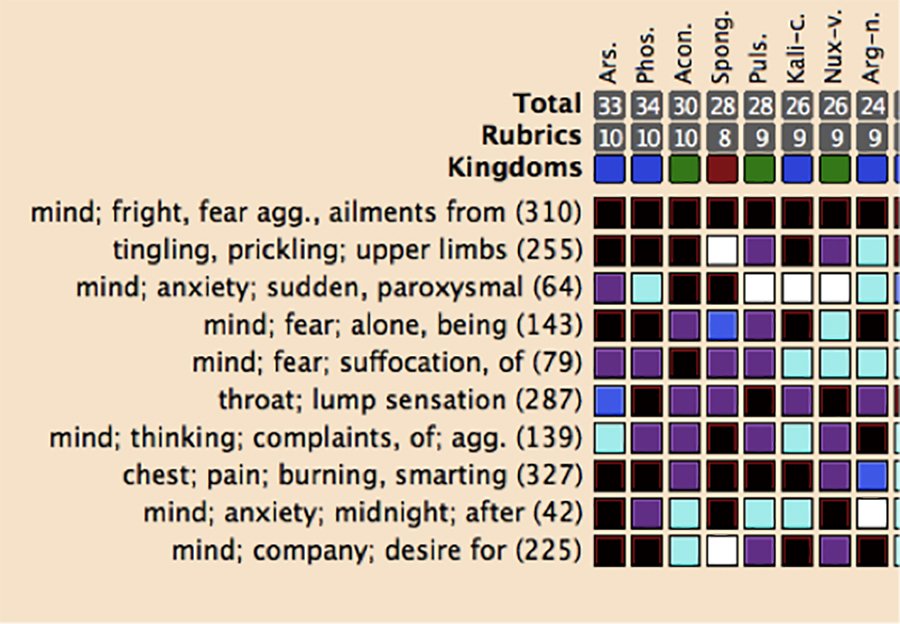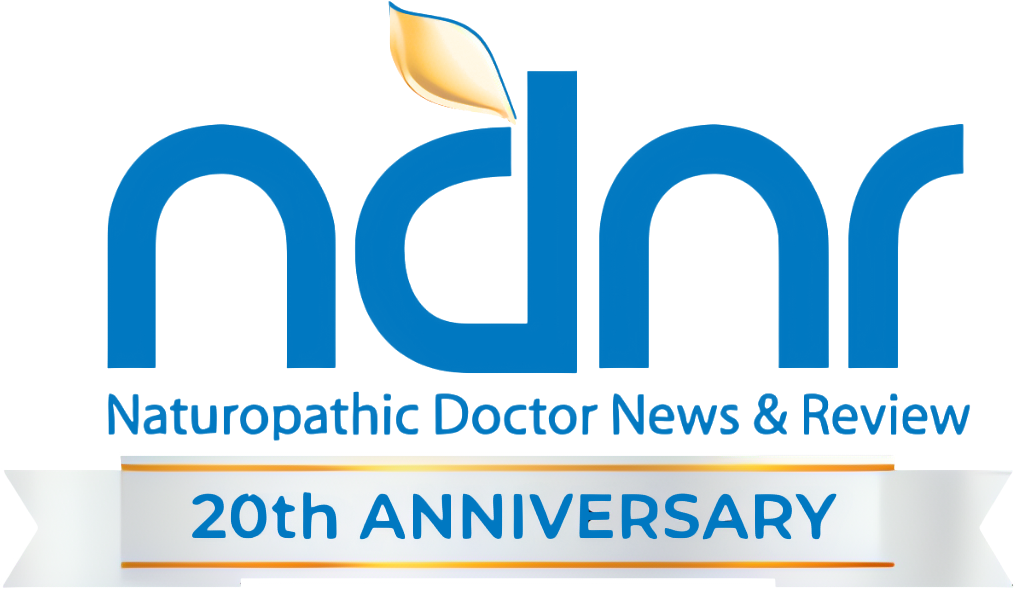Student Scholarship Honorable Mention
Morgan MacDermott
Nazanin Vassighi, ND
According to the Centers for Disease Control and Prevention (CDC), anxiety disorders – including panic disorder and posttraumatic stress disorder (PTSD) – are the most common class of mental health disorders in the general population.1 Anxiety disorders affect over 40 million adults in the United States today, with panic disorders affecting 6 million.2,3 The overall US financial burden of the anxiety-disorder illnesses is over $42 billion per year, which is one-third of the country’s total mental health bill.2 Unfortunately, of those 40 million people, only 36% are getting any form of treatment.4 The SSRI antidepressants, paroxetine and sertraline, are ranked 7th and 8th among the top 10 most prescribed pharmaceuticals in the United States today. Unfortunately, these drugs can come with unwanted effects as well, such as decreased sexual desire and impotence, confusion, aggression, and insomnia.5,6
Thankfully, this is not the only option available. Homeopathy is not only low in cost and causes very few to no side effects, its effectiveness is also undeniable when prescribed by a competent practitioner. Homeopathic treatment of anxiety and panic disorders has been shown to be effective, both clinically and in research.7 This medicine comes alive in a case study setting. As such, we present here the resolution of one woman’s panic attacks via daily treatment with Arsenicum album 30C.
Patient Presentation
Linda (fictitious name to preserve patient confidentiality) is a 32-year-old female patient who presented to the Bastyr University Clinic with a 2.5-month history of panic attacks occurring 1-2 times per week. The initial episode began in the middle of the night, when she woke in a panic. She felt dizzy, frightened, and noted tingling in her arms. She also experienced palpitations, burning chest pressure, and the sensation of something stuck in her throat. Convinced she was having a heart attack, she called 911. After transport to the hospital, an EKG was performed and pronounced within normal limits (WNL).
Linda was diagnosed with anxiety due to stress, and was prescribed alprazolam, to take as needed. She was hesitant to take it. Several nights later, she experienced a similar episode. Linda returned to the emergency room because she felt she was choking due to the “stuck” sensation in her throat. At this visit, a chest X-ray was performed, with normal results. She was instructed to take her anti-anxiety medication and see her primary care physician (PCP) for suspected gastroesophageal reflux disease (GERD).
Her PCP prescribed daily pantoprazole, which only minimally decreased the sensations of chest burning. A third attack occurred several days later after eating dinner, when she felt the sensation of food stuck in her throat. Linda visited her nearest urgent care and again was diagnosed with anxiety and heartburn. An endoscopy was ordered by her PCP, which revealed a hiatal hernia and gastritis, with Helicobacter pylori. For this she was prescribed clarithromycin (500 mg, 1 cap twice daily) and amoxicillin (500 mg, 2 caps twice daily) for 14 days. Treatment for her gastritis and H pylori did not affect the frequency or character of her panic attacks. Since then, she had continued to have 1-2 panic attacks per week, without ER visits, for 2.5 more months before coming in to the Bastyr University Clinic for homeopathic treatment.
Linda had never had a panic attack in her life before this all happened. The weeks before her first panic attack were filled with shock and disappointment due her sister’s sudden divorce and the complexity of its effect on her entire family. She explained she is a “big time worrier,” and would purposefully plan her day to be around other people, in the event that something were to happen to her.
Current medications included a levonorgestrel IUD, pantoprazole (40 mg daily), alprazolam (0.5 mg as needed for 1 week), then switched to paroxetine (20 mg daily) because the alprazolam wasn’t helping. She did not take regular supplements. Her diet was whole-foods-based, with no major restrictions, and appeared non-contributory to her symptoms. She denied consumption of caffeine, alcohol, tobacco, or recreational drugs. She slept restfully, between 8-9 hours per night, had normal daily bowel movements, and exercised 3-5 days per week by lifting weights and swimming. She is a stay-at-home mother for her 2 school-aged children. She rated her stress a 5/10 (10=worst) on most days, stating she had to “hold everything together” and was always busy with to-do lists at home.
Review of systems was positive for tinnitus for 1 week, substernal chest pain after eating, and occasional dizziness when standing. Vitals included blood pressure of 100/60 mm Hg, heart rate of 72, and temperature of 98.1°F; height was 4’11.5” and weight was 102 lb. Physical exam was unremarkable.
Workup & Homeopathic Assessment
All performed cardiovascular assessments revealed regular rate and rhythm, without pathology or complications. To rule out other medical conditions such as hyperthyroidism or anemia, the following labs were ordered: CBC with differential, CMP, serum vitamin D3, TSH/fT3/fT4, and total T4. Results were all WNL. Our working diagnosis was panic disorder, as she met the criteria per the DSM-V:
- She experienced recurrent, unexpected panic attacks characterized by an intense surge of fear that would reach its peak within minutes and included at least 4 symptoms in a given list of 13:
- Trembling
- Palpitations
- Feelings of choking
- Chest pain
- Dizziness
- Fear of dying
- She experienced at least 1 attack followed by 1 or more months of persistent concern or worry that additional attacks would occur, along with significant behavior changes related to the attacks:
- Avoided being home alone by purposely surrounding herself with people
- Symptoms were not attributable to another physiological or medical condition
- Symptoms were not better explained by another mental disorder
Other considerations included the hiatal hernia found on endoscopy. Future plans included a referral to the physical medicine rotation at the clinic, to rule out its role in the chest pressure or globus hystericus sensations that preceded her panic attacks. We moved forward with the homeopathic intake and gathered the following information.
Characteristic Symptoms (based on presence & intensity)
- Ailments from fright, shock
- Anxiety occurring at night in bed
- Tingling in her upper arms and hands
- < thinking of complaints
- Fear of suffocation
- Body shivers, trembles with feeling of great chilliness
- Lump in throat
- Burning chest pressure in sub-sternum
- Feels strong urge to burp, since it ameliorates the fear and anxiety, but cannot
- Extreme fear and worry about many areas of life, including: being alone, death, having a stroke/her health, that something will happen, ghosts, heights, robbers, darkness
- > with consolation and company
Rubrics & Remedies
Given the information above, the rubrics listed in Figure 1 were used in MacRepertory.

The top remedies indicated in the repertorization were Arsenicum album, Phosphorus, and Aconitum napellus. We decided to go with homeopathic Arsenicum album due to her certainty of impending death and the intense fear and anxiety surrounding her health during her panic attacks. Linda had many fears, in general, especially the characteristic Arsenicum fears of death, being alone, and robbers. Her ailments were worse at night, and her panic attacks started with full-body chilliness that then turned into trembling and shaking with clammy hands. She was very restless and would often spring out of bed. She would feel burning chest pains with palpitations and the sensation of a lump in her throat. Thoughts about her health would trigger a panic attack. She felt better with consolation, touch, and knowing that people were on their way to help her, which is typical of Arsenicum patients who need reassurance. Overall, as a person and in her case, Arsenicum seemed to cover her susceptibilities the best.
We were able to rule out the other top-fitting remedies by confirming discrepancies of their profile in the materia medica. Aconitum was our second choice, given the sudden onset of fear, ailments from shock, tingling in the extremities; Aconitum was most likely the remedy she needed in the moment of a panic attack. However, in addition to many of these symptoms, Arsenicum also covers burning chest pains and > from consolation, the latter of which is not covered by Aconite. Phosphorus was interesting but unfit for this case due to her lack of thirst and time of aggravation, although she is much > by company and consolation. The extreme worry about her health and fear of robbers with restlessness characterizes Arsenicum more so than Phosphorus.
Arsenicum album 30C was prescribed, 3 pellets once per day in the morning, with follow-up in 2 weeks. The patient was educated on the possible reactions of homeopathy, including the potential for an initial aggravation state followed by improvement of symptoms, and on the ideas of “exonerative discharge” and “return of old symptoms.”
Follow-up & Results
After 1 week, Linda called with some questions. She explained that her anxiety had worsened during the first few days of taking the remedy, and that a few patches of what appeared to be eczema had appeared on different parts of her body. She did note that the rash had resolved and her anxiety had also started to improve; however, she wanted to confirm that this was a normal progression of homeopathy. We clarified with her that the rash was indeed an example of exonerative discharge and that it indicated a positive reaction to the remedy. This was our first sign that she had responded positively to the remedy and that Arsenicum album was the right match for her anxiety about health with a desire for reassurance!
Two Weeks Later
At her first follow-up, Linda reported that she had not had any panic attacks since we saw her last and that she felt 80% better overall. She explained that when she felt anxiety she would wait, expecting the chills and trembling to begin, but that it would never progress to a panic attack. She reported that her anxiety about her health, fear of death, fear of being alone, and the sensation of a lump in her throat were all 80% better. The chest pressure was better but still present, and she had begun to decrease her dosage of pantoprazole under the guidance of her PCP. We interpreted the change in chest pressure and anxiety as a positive sign, and we recommended continuing on with her normal prescription and to follow up by phone in another 2 weeks.
Two Weeks Later
At her second follow-up, Linda reported that she still had no panic attacks and that her fears, anxiety about health, and shivering/trembling sensations were all entirely resolved! The burning chest sensations were slightly persisting but almost gone. She had titrated her pantoprazole down to its lowest dose at the day of our visit and planned to discontinue it. Linda was elated with her results, as she never thought she would feel “normal” again. We decided to have 1 final follow-up in a month, with the plan to discharge her if her symptoms had remained stable.
One Month Later
At this last follow-up, 4 weeks later (6 weeks total treatment), she reported that all symptoms of panic attacks, anxiety, fear, and chest sensations completely resolved. She had stopped the remedy 1 week prior to visiting us because she was elated with the results and felt she no longer needed it. With this goal accomplished, this appointment was the completion of care, and we happily discharged her from the shift.
Conclusion
This is one homeopathic success story among the many that exist. The end result of this story is that our patient not only was free from experiencing frightening panic attacks, but she also began to fully enjoy her life without fear of something bad happening to her. She avoided further ER visits and the use of anti-anxiety medication. She was also able to discontinue the use of daily proton-pump inhibitors and to manage her GERD-type symptoms with diet and physical medicine.
The use of homeopathy for anxiety and panic is significant, affordable, safe, and without strong side effects. Careful prescription by a competent naturopathic doctor or homeopathic practitioner is key to ensuring proper remedy selection and management of the case. The improvement to a patient’s life is lasting and permeates many levels of their experience of living and health overall. Continued study of homeopathy and its role in mental health treatment is imperative to our oath as naturopathic doctors to first do no harm, and to implement the power of nature in initiating optimized health for patients everywhere.
References:
- Centers for Disease Control and Prevention. CDC Report: Mental Illness Surveillance Among U.S. Adults. Last reviewed December 2, 2013. CDC Web site. 2017. https://www.cdc.gov/mentalhealthsurveillance/index.html. Accessed March 17, 2017.
- Anxiety and Depression Association of America. Facts & Statistics. ADAA Web site. https://www.adaa.org/about-adaa/press-room/facts-statistics. Accessed March 18, 2017.
- Anxiety and Depression Association of America. Panic Disorder. ADAA Web site. https://www.adaa.org/understanding-anxiety/panic-disorder-agoraphobia. Accessed March 18, 2017.
- National Institute of Mental Health. Any Anxiety Disorder. Last updated November 2017. NINM Web site. https://www.nimh.nih.gov/health/statistics/prevalence/any-anxiety-disorder-among-adults.shtml. Accessed March 17, 2017.
- Anxiety Centre. Anxiety Effects on Society Statistics: Anxiety Disorder Statistics. Last updated July 21, 2018. Anxiety Centre Web site. http://www.anxietycentre.com/anxiety-statistics-information.shtml. Accessed March 17, 2017.
- com. Paxil Side Effects. Last reviewed June 7, 2018. Drugs.com Web site. https://www.drugs.com/sfx/paxil-side-effects.html. Accessed March 17, 2017.
- Davidson JR, Morrison RM, Shore J, et al. Homeopathic treatment of depression and anxiety. Altern Ther Health Med. 1997;3(1):46-49.
 Morgan MacDermott is a 5th-year student clinician at Bastyr University in San Diego, CA. Morgan is passionate about the use of homeopathy, botanicals, functional medicine, and nature cure to reach each individual’s state of vibrant health. With many experiences of success on the Bastyr homeopathy shift, she has sought out additional training and understanding of this valuable and effective modality. She is wildly enthusiastic about using naturopathic medicine to treat autoimmune diseases as well as to optimize the health of mothers and families through the transitions of preconception, prenatal, and postpartum.
Morgan MacDermott is a 5th-year student clinician at Bastyr University in San Diego, CA. Morgan is passionate about the use of homeopathy, botanicals, functional medicine, and nature cure to reach each individual’s state of vibrant health. With many experiences of success on the Bastyr homeopathy shift, she has sought out additional training and understanding of this valuable and effective modality. She is wildly enthusiastic about using naturopathic medicine to treat autoimmune diseases as well as to optimize the health of mothers and families through the transitions of preconception, prenatal, and postpartum.
***
 Nazanin Vassighi, ND, is a naturopathic doctor and Assistant Professor of Homeopathy at Bastyr University California (BUC). Dr Vassighi graduated from Southwest College of Naturopathic Medicine (SCNM) in Tempe, AZ. After completing a general medicine residency at SCNM, she was accepted into a specialized homeopathy residency sponsored by Standard Homeopathic under Dr Stephen Messer, ND, DHANP. She is an established speaker and her work has been published in Homeopathy Today. In addition to teaching homeopathy at BUC, she serves as faculty supervisor at BUC Clinic, training naturopathic medical students in clinical homeopathy. For more information on Dr Vassighi, visit www.bastyrclinic.org.
Nazanin Vassighi, ND, is a naturopathic doctor and Assistant Professor of Homeopathy at Bastyr University California (BUC). Dr Vassighi graduated from Southwest College of Naturopathic Medicine (SCNM) in Tempe, AZ. After completing a general medicine residency at SCNM, she was accepted into a specialized homeopathy residency sponsored by Standard Homeopathic under Dr Stephen Messer, ND, DHANP. She is an established speaker and her work has been published in Homeopathy Today. In addition to teaching homeopathy at BUC, she serves as faculty supervisor at BUC Clinic, training naturopathic medical students in clinical homeopathy. For more information on Dr Vassighi, visit www.bastyrclinic.org.


